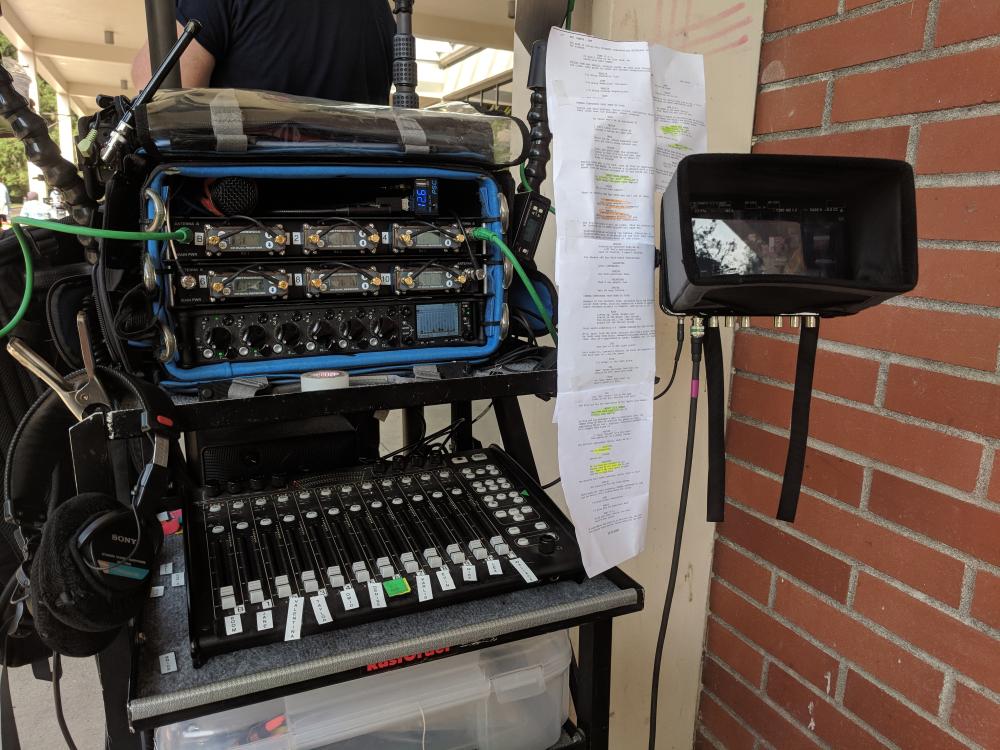-
Posts
470 -
Joined
-
Last visited
-
Days Won
1
About syncsound
- Birthday January 1
Contact Methods
-
Website URL
http://www.syncsoundcinema.com/
Profile Information
-
Location
PDX, OR, US
-
About
sound for picture in pdx
-
Interested in Sound for Picture
Yes
Recent Profile Visitors
The recent visitors block is disabled and is not being shown to other users.
-
Nice, might check this out
-
syncsound started following Battery storage/caddy options for rechargeable AAs
-
Hello all, Anyone care to share their storage and caddy options for rechargeable AA batts? When I used to use rechargeables, I used Powerpax caddies. A battery with the positive pin pointing down/in meant "charged"; pointing up/out meant "dead". You could do a quick visual check of your battery status, and it worked just fine, for a time. After a while, repeated insertion/removal of the batteries from the caddy would strip the outer wrap, and the batteries would short when placed in gear. I'm considering a possible return to rechargeables, and looking for alternatives. Thanks!
-
Yeah. Wondering why they're adding it beyond marketing. The Cantar doesn't strike me as the choice of SFX recordists capturing gunfire, planes, etc.
-
How does it implement the 32 bit recording? Are they using the mixed output of 2 converters like other recorders?
-
Agreed. I prefer the plug-on form factor for wireless boom and plants. Plus, I want the option to use with a handheld when needed.
-
Sound Devices 664 and CL-12 additional USB port
syncsound replied to Mikro Addict's topic in Equipment
Yes, you can use the USB-A port labeled "Keyboard". That has worked for me. -
I've had good luck with the Remote Audio Microcat: https://remoteaudio.com/products/microphone-solutions/micro-cat/ They have a larger visual profile, but they're very effective.
-
Any experience with miking talents in bikini for drama ?
syncsound replied to jimmycat's topic in General Discussion
It might also be worth a conversation with director, DP, and wardrobe. There might be the option of "cover up" tops, or some other light shirt. -
AFAIK there aren't any "true" 32 bit ADCs, either. Aren't they using stacked converters, or something similar?
-
What is the most dialogue you’ve had in a single take?
syncsound replied to Izen Ears's topic in Images of Interest
-
One thing that would make a difference would be test screening with fresh ears. Almost everyone involved in the production has at least read the sides, and therefore knows what the actors are supposed to say before they say it. Being primed like that can cause a listener to overlook poorly delivered lines, either through low projection or poor articulation. Defamiliarization would allow people to catch these kinds of things. As "creative choices": you can de-emphasize dialogue in a scenario that doesn't require any exposition, that's fine. But if it's a situation that many people are unfamiliar with, you need to help the audience along. For example: "Pat" walks into a room, up to a counter. On the other side of the counter stands "Chris". Pat mumbles something unintelligible to Chris. Chris then places a glass full of liquid on the counter. Pat picks up the glass and walks away. We can reasonably assume that Pat walked into a bar, and ordered a drink from Chris. Unless it's relevant to the plot, we don't necessarily need every word to arrive at this conclusion. When I saw Tenet the first time in a theater, I could barely keep up. For me, that was an example of when the audience needed more help. You had new characters in new situations whose voices were muffled by gas masks. My second viewing was at home, with subtitles. This helped, but only barely. Which brings me to one other issue: narrative clarity. If you're going to be exploring abstract concepts, you need to do so using simple, direct language, as you will be teaching the audience through exposition. It can be challenging to do this in new and relevant ways, of course, but that's what we sign up for as storytellers. Example A: the "Mr. DNA" sequence from Jurassic Park. The goal is to summarize DNA gene splicing for the general audience, just enough for them to follow the plot. It does this very efficiently, in about 3 minutes and 30 seconds, and in a manner that is fully integrated into the story. Example B: all of The Big Short. Here, they chose different methods, including fourth wall breaks and direct address to camera. The film does a great job in explaining a very complex subject simply, essentially the cinematic expression of the Feynman Technique. And here is where I fully graduate to being a grumpy old man: I grew up on the original Star Wars trilogy. I personally don't remember people not being able to understand the dialogue, or being unable to follow the story enough. Lines were either delivered clearly, or looped for clarity. The scripts, while teeming with invented languages and alien words, still conveyed the essential narrative simply enough that even children could follow them. We have solutions to all the problems listed in the above article, we simply need to implement them. End rant.
-
Me as well, though I'm concerned that might become unsustainable long term.
-
I'm curious about what protocols sound mixers are requesting/requiring on non-union sets? A recent call about a corporate gig has surprisingly lax protocols considering the high profile client, so much so that I felt that I had to pass on it. I'm wondering if I'm being overly cautious and need to adapt?

.png.279748a58a2b862b7aa5f3b84126e232.png)


